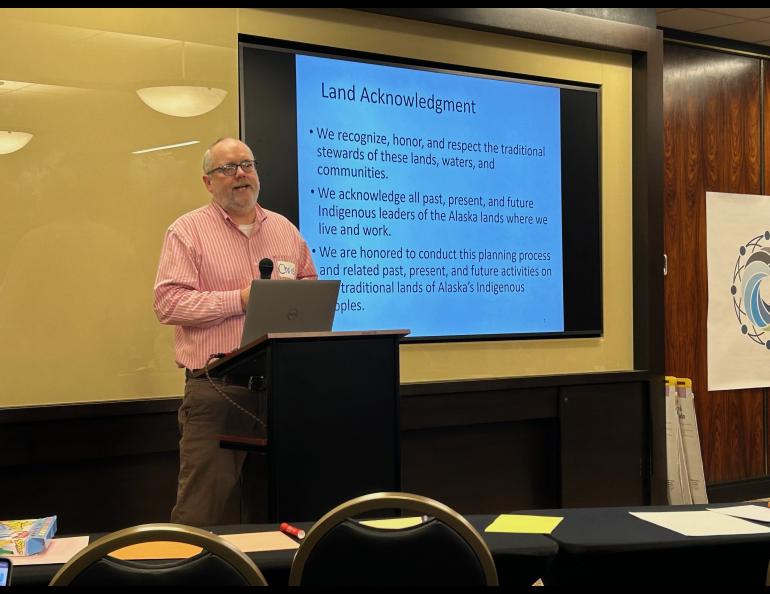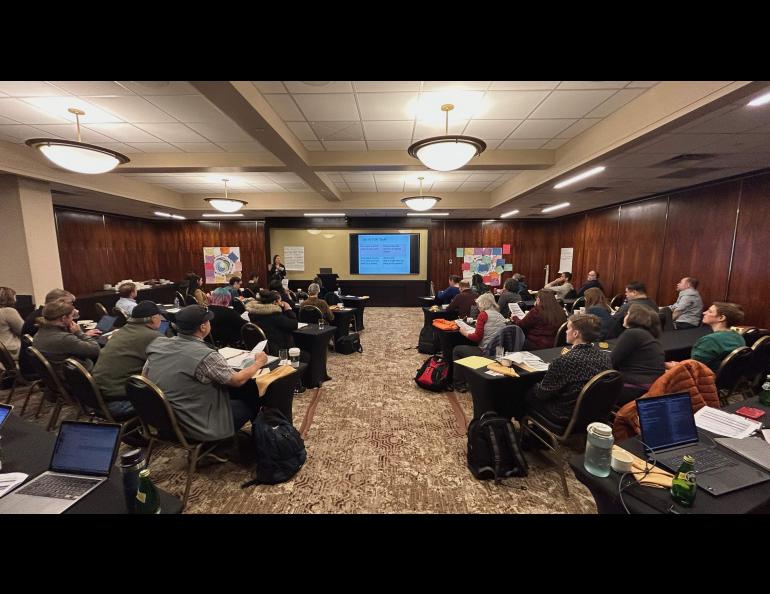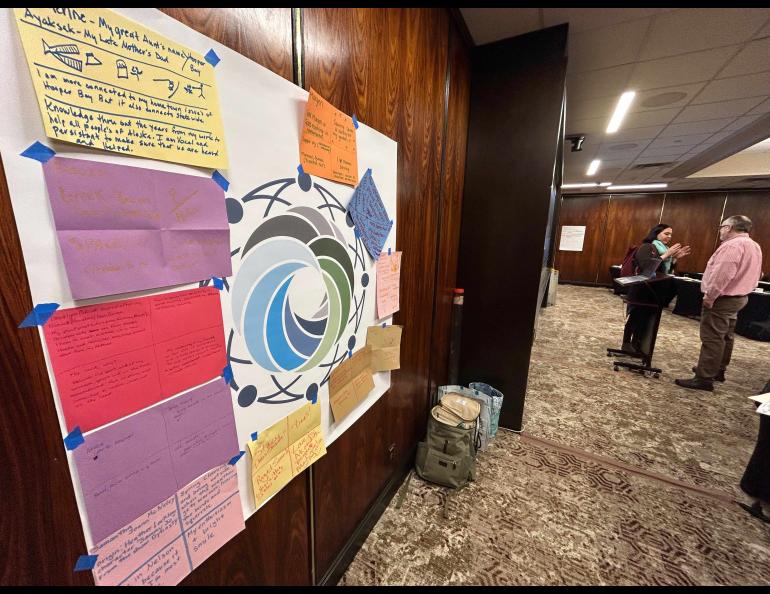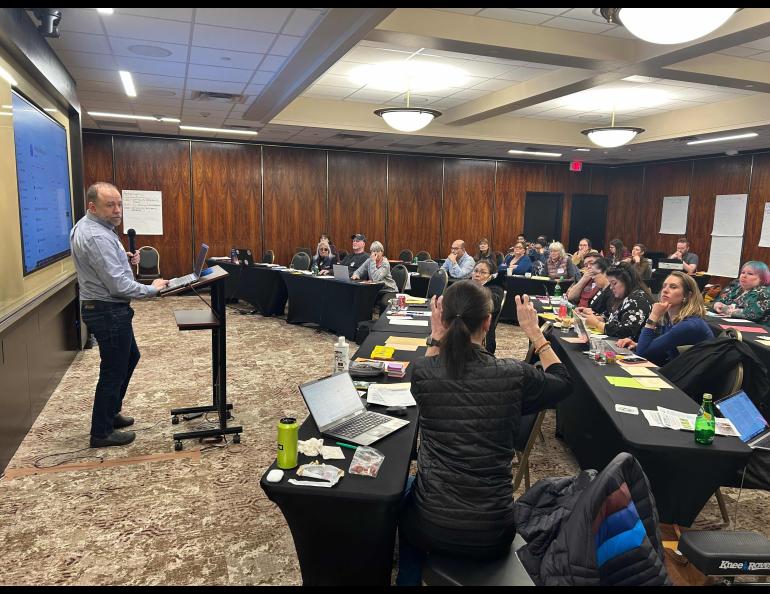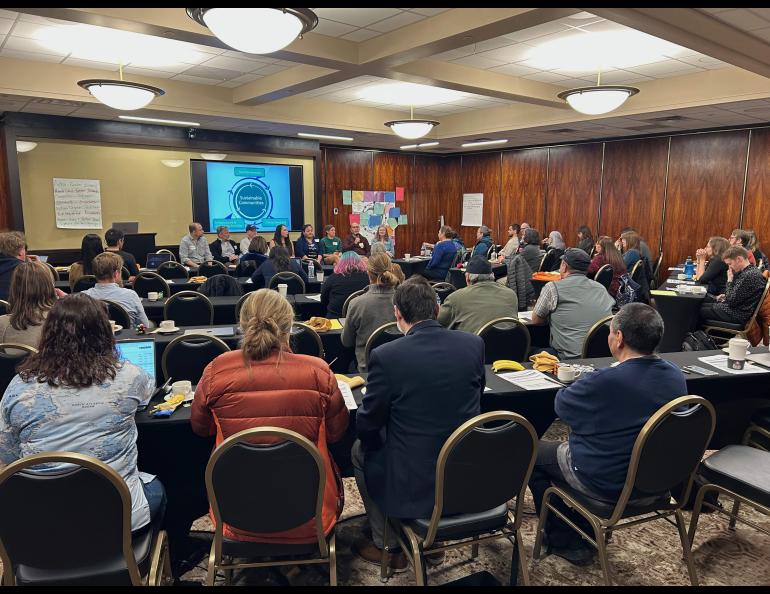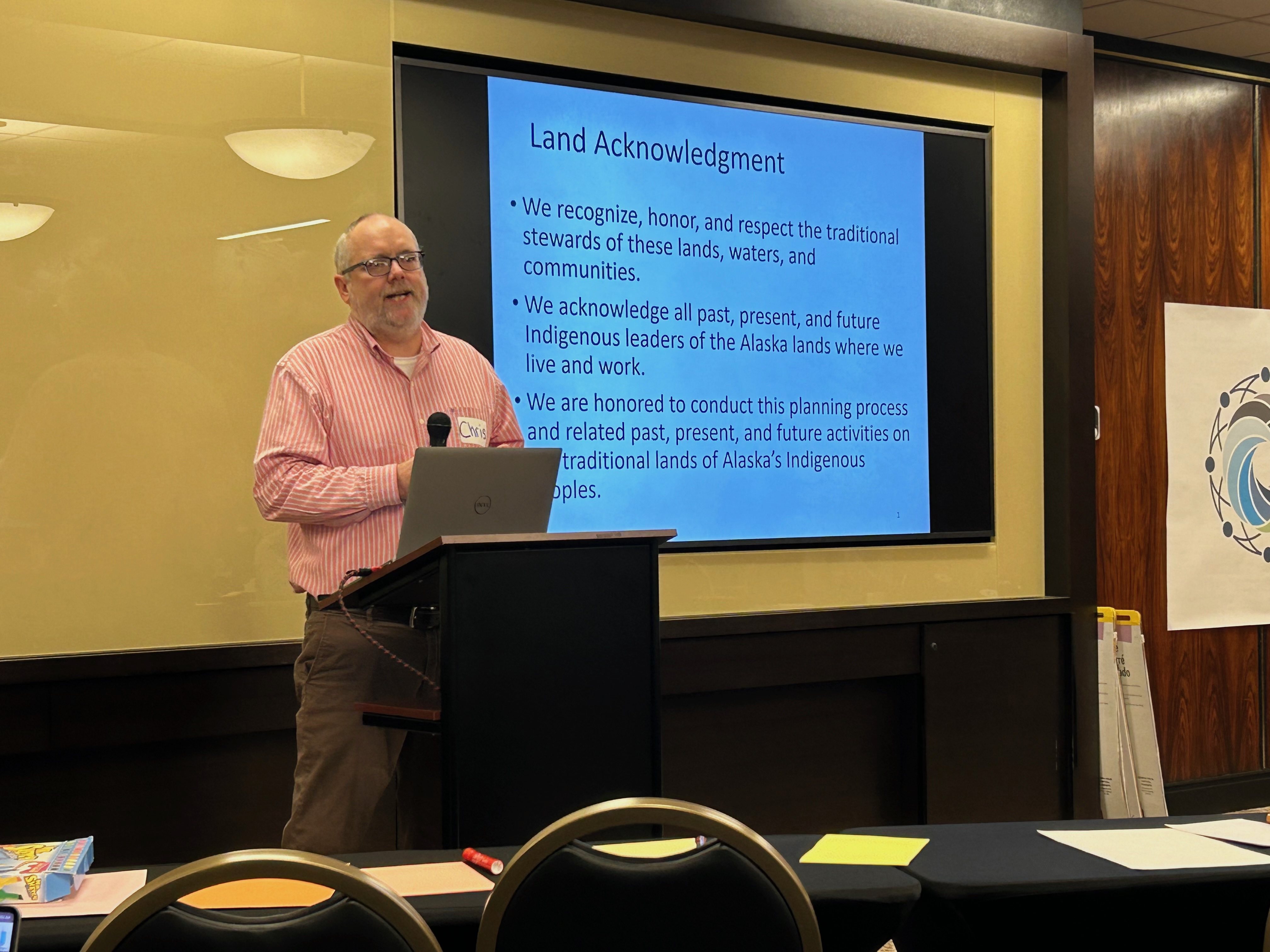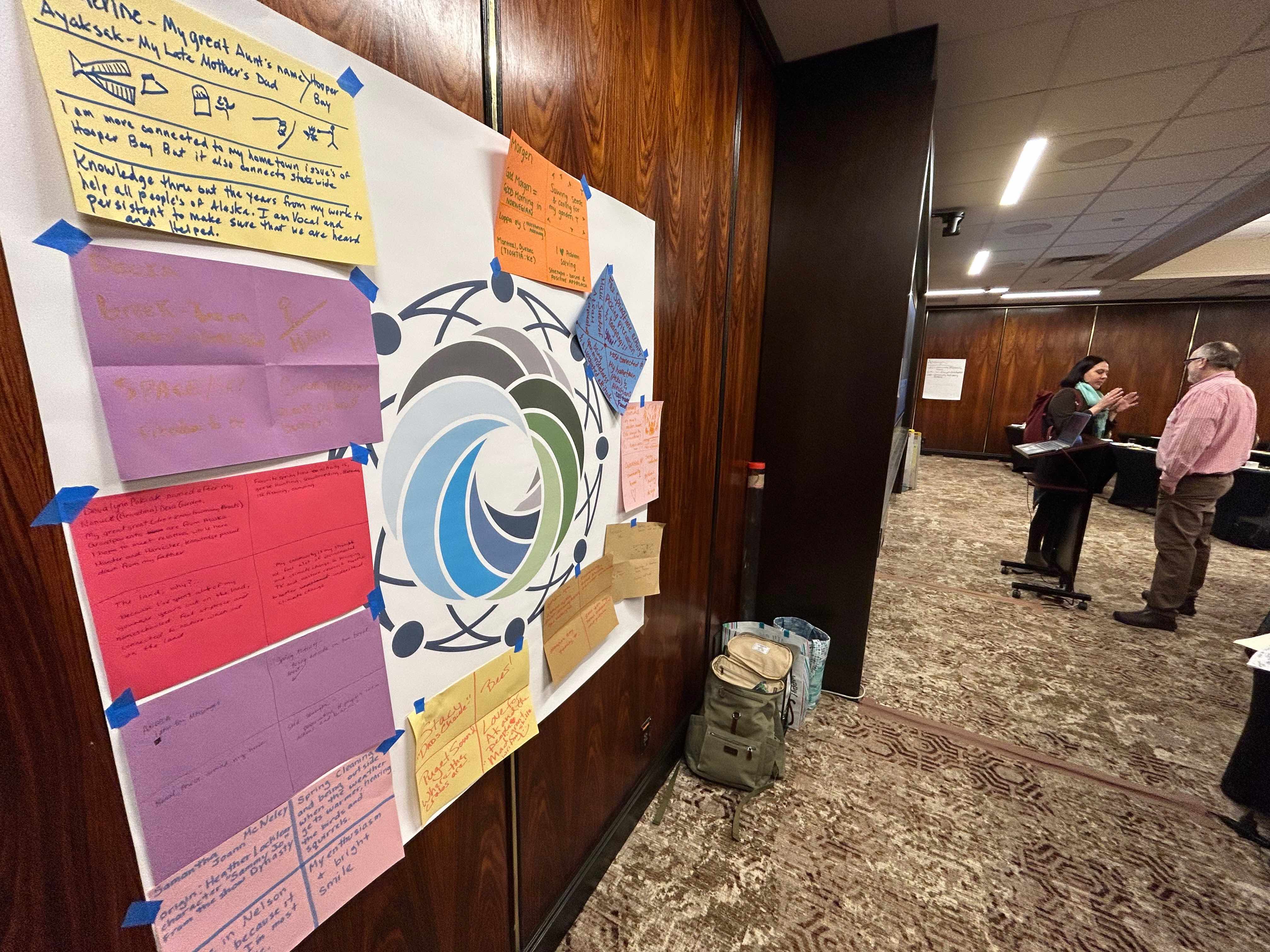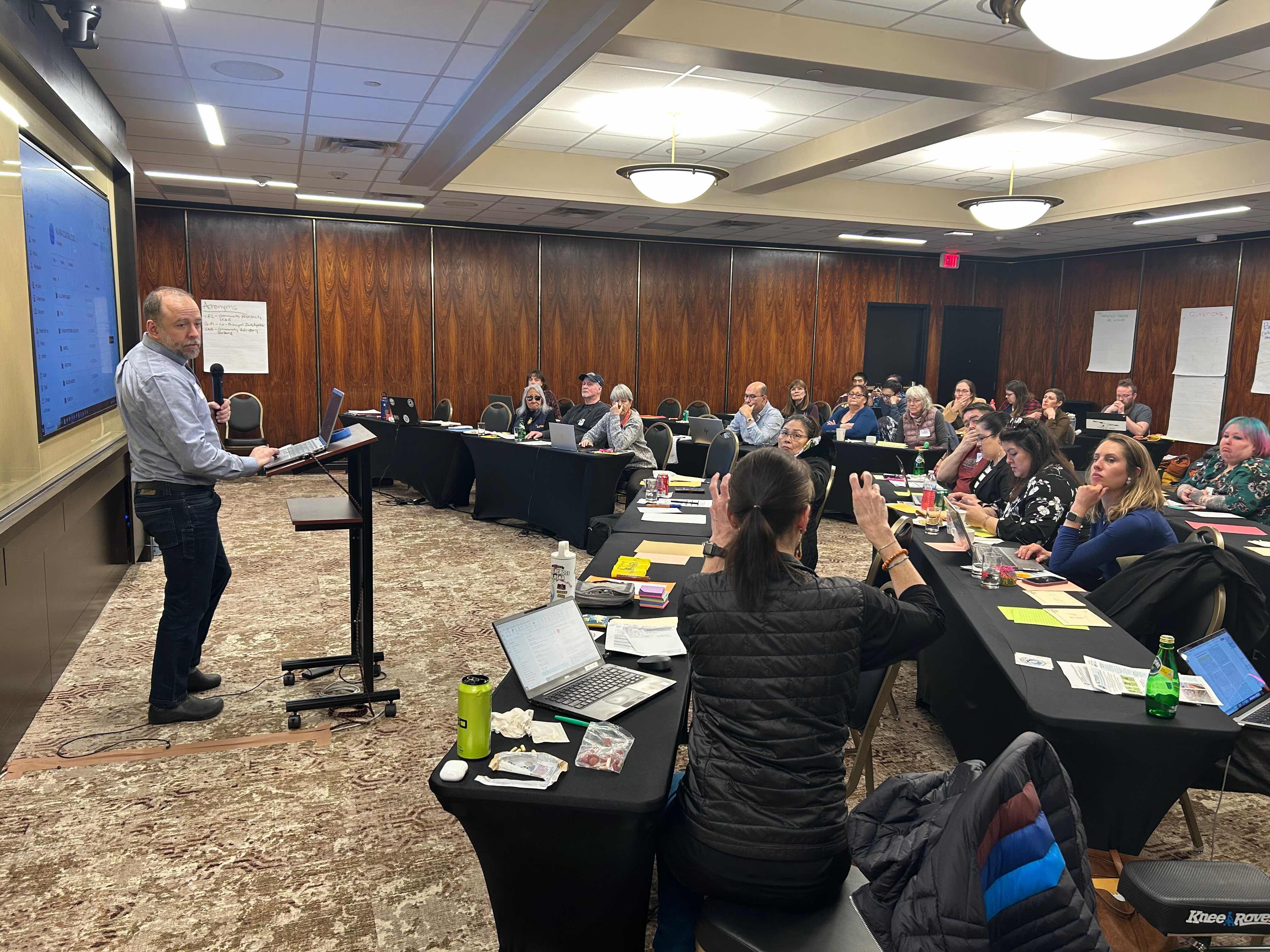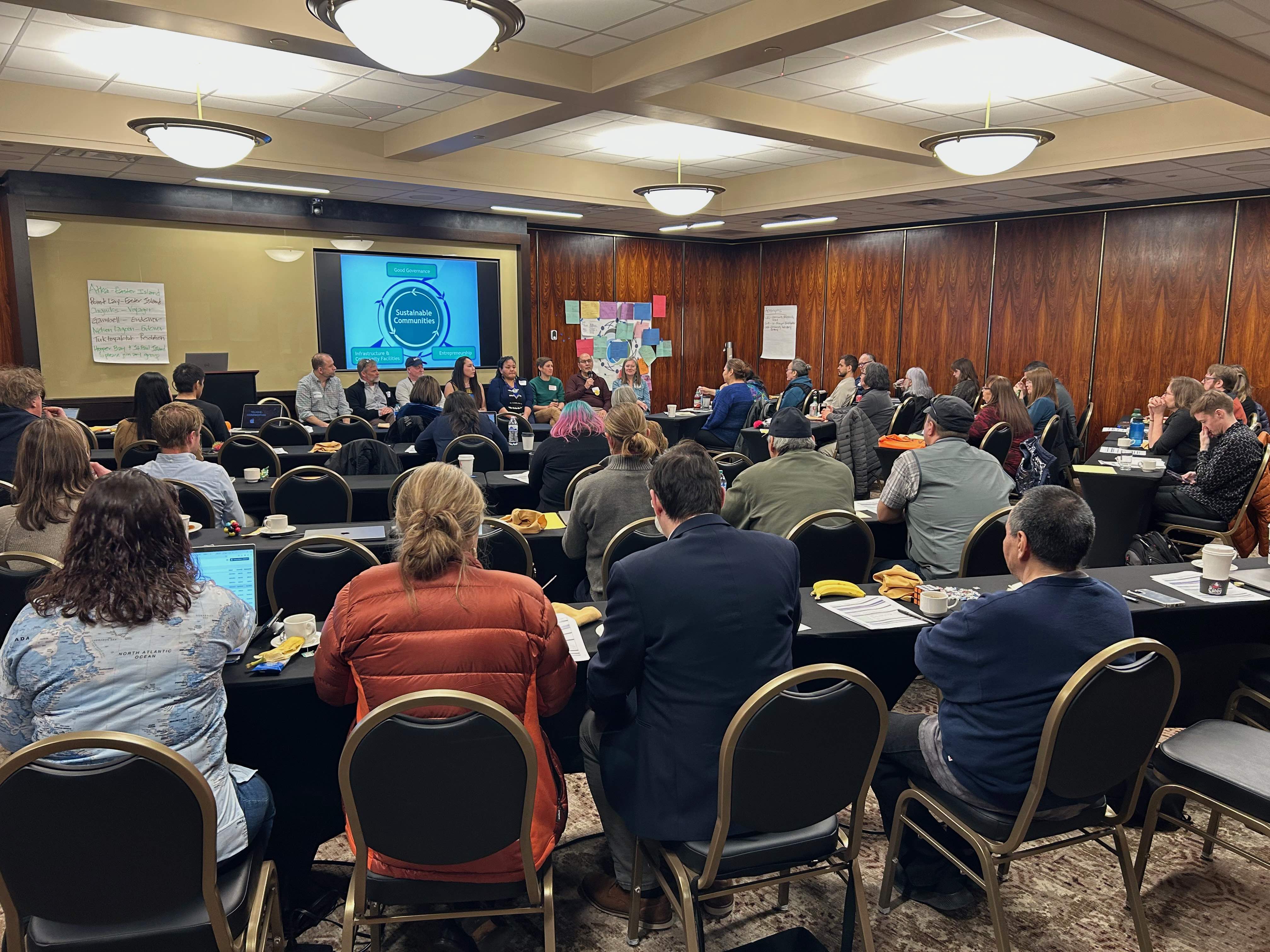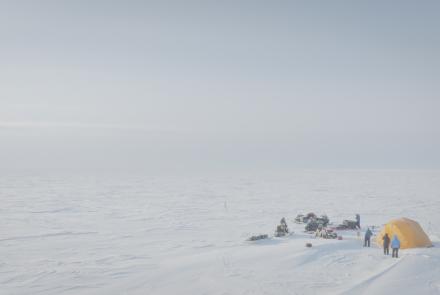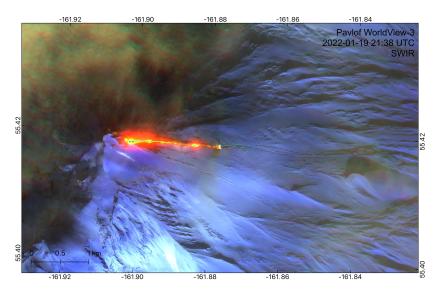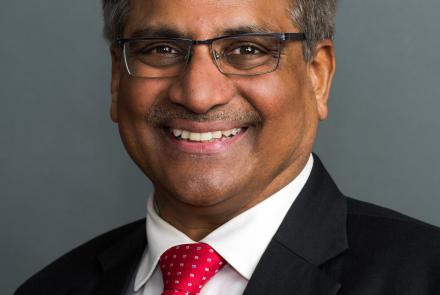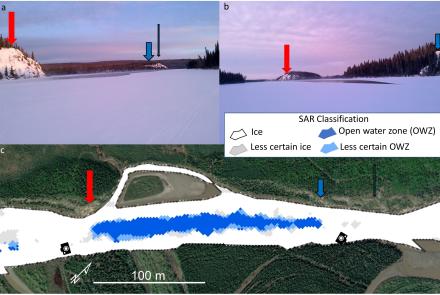About 50 people from Alaska and Canada gathered in Anchorage on Monday to begin a weeklong retreat. Their goal is to accelerate the work of helping several coastal communities respond to hazards attributed to climate change.
The National Science Foundation is funding a four-year $13.9 million program led by the University of Alaska Fairbanks to help communities confront coastal erosion, flooding, permafrost thaw and other climate-driven changes.
The funding supports ACTION, the Alaska Coastal Cooperative for Co-producing Transformative Ideas and Opportunities in the North. It is led by the Alaska Coastal Cooperative at UAF in collaboration with several rural coastal communities, Arizona State University, the University of Northern Iowa and the University of Texas at El Paso.
Chris Maio, director of the UAF Geophysical Institute’s Arctic Coastal Geoscience Lab, is director of the Alaska Coastal Cooperative.
“There is a climate crisis,” Maio said in opening comments Monday. “For the communities I visit and get to walk the shores of and talk with the people about, it’s real.
“Some of the erosion that I’ve observed is catastrophic,” he said. “It’s really changing people’s lives. It’s changing where they fish, it’s changing where they drive, it’s changing how they think about the land, it’s changing their resources and their cultural lands.”
“It is a monumental challenge that we are facing,” he said. “And that has to be acknowledged.”
Alaska communities participating in ACTION and sending representatives to the weeklong gathering include Point Lay, Gambell, Hooper Bay, St. Paul Island, Nelson Lagoon, Atka and the Chignik Intertribal Coalition, which includes Chignik Lake, Chignik Lagoon, Chignik Bay, Ivanof Bay and Perryville. The project also includes Canada’s Northwest Territories community of Tuktoyaktuk, which also had representatives at the meeting.
ACTION has several goals:
• Create a network of research leaders in each community.
• Work with communities to identify training and education needs that can be targeted through UAF’s rural campuses.
• Develop a process for co-producing applied research and education programs that meet community priorities.
• Fill gaps in coastal monitoring and ocean observing.
• Work with communities to engage with decision-makers.
Casey Ferguson, Indigenous engagement coordinator for the Alaska Coastal Cooperative, explained the important role of the research leads that each community will select and fund through the NSF grant.
Ferguson is the central connection for the research leaders, who will meet regularly to discuss community priorities and plans for addressing them.
“This is something that we want to develop with the communities,” he told the audience. “The community members are the ones who really know what those priorities and concerns are. No two communities are the same, so we’re really leaning on each community and each tribe to develop the community research lead network.”
Others attending the Anchorage workshop represented Arizona State University, University of Northern Iowa, the UAF International Arctic Research Center, UAF Institute of Arctic Biology, UAF Center for Alaska Native Health Research, the UAF Geophysical Institute’s Arctic Coastal Geoscience Lab, National Oceanic and Atmospheric Administration, Alaska Ocean Observing System and U.S. Geological Survey.
The Alaska Coastal Cooperative formed in spring 2022. It serves Western Alaska, where researchers already had community relationships and where some of the greatest needs exist.
UAF Vice Chancellor for Research Nettie LaBelle-Hamer, UAF Vice Chancellor of Rural, Community and Native Education Charlene Stern and the National Science Foundation’s Permafrost Coastal Systems Network provided funding for the organization to begin.The Alaska Coastal Cooperative last year received a $590,000 grant from the Paul G. Allen Family Foundation to map rapidly changing watersheds of the Chignik region on the Alaska Peninsula.
